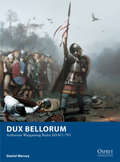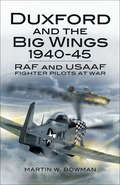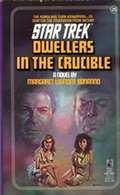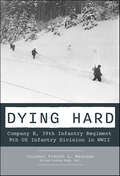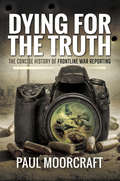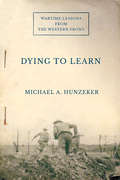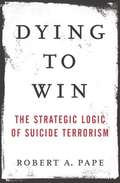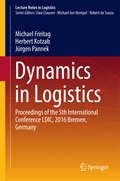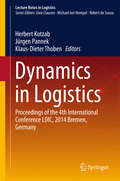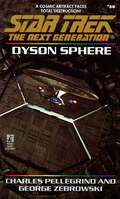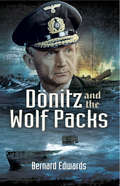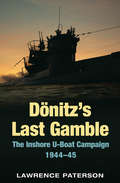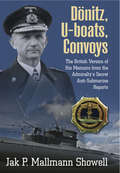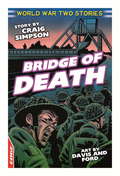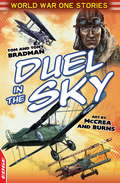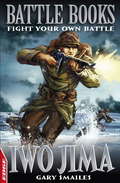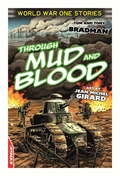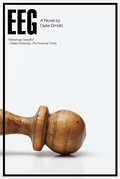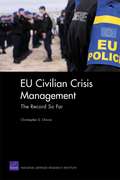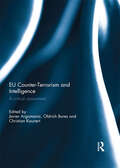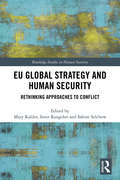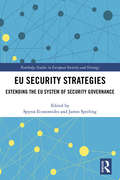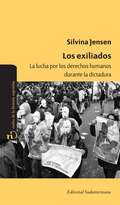- Table View
- List View
Dux Bellorum # Arthurian Wargaming Rules AD367-793
by Daniel Mersey Jose PenaThe Dark Age of Britain, from the middle of the 4th century to the end of the 8th, was a time of violence and warfare, when charismatic warlords such as the fabled King Arthur could gather together armies and carve out their own kingdoms. With this new set of wargames rules, players can take on the role of these warlords and command their own armies on the tabletop. Written by the author of the popular Glutter of Ravens rules set, Dux Bellorum is an element-based system, where each base of figures represents 50 fighting men. Each player has a specific number of points with which to construct his force and can choose a Late Roman, Romano-British, Welsh, Saxon, Pictish, Irish, or Sea Raider army, amongst others. The game is then played out following a set of simple, fast-paced rules. A completely self-contained gaming system, Dux Bellorum is perfect for gamers who are looking for a way into fighting Dark Age battles without investing a lot of time or money in larger rulesets.
Duxford and the Big Wings, 1940–45: RAF and USAAF Fighter Pilots at War
by Martin W. BowmanA pulsating account of the young RAF and American fighter boys who flew Spitfires, Hurricanes, Thunderbolts and Mustangs during 1940-45. It is unique in that the story is told using first person accounts from RAF, German and American Eagles who fought in the skies over England in the Battle of Britain in the summer of 1940 and the great air offensives over occupied-Europe from 1942 onwards. The first five and a half chapters cover the Battle of Britain period when the RAF squadrons fought dog fights with the Luftwaffe and then fought them in gathering strength using the Big Wings to meet the bomber fleets attacking London. The second part of the book covers the Eagle squadron period, which was expanded with Americas entry into the war. The action moves to the USAAF Big Wings of Thunderbolts and Mustang fighters that flew escort missions and dueled with the Luftwaffe over the continent during the massive bomber raids on German targets in France, the Low Countries and the Reich itself. A whole host of incredible first hand accounts by British, Polish, Czech, German and American fighter pilots permeate the action and describe the aerial battles as only they can. This unique book also includes many accounts and photos that have not previously been seen before while the rich mix of combat accounts from all sides are brought together for the first time in one volume.
Dwellers in the Crucible (Star Trek: The Original Series #25)
by Margaret Wander BonannoDWELLERS IN THE CRUCIBLE Warrantors of Peace: the Federation's daring experiment to prevent war among its members. each Warrantor, man or woman is hostage for the government of his native world -- and is instantly killed if that world breaks the peace. Now Romulans have kidnapped six Warrantors, to foment political chaos -- and then civil war -- within the Federation. Captain Kirk must send Sulu to infiltrate Romulan territory, find the hostages, and bring them back alive -- before the Federation self-destructs!
Dying Hard: Company B, 39th Infantry Regiment, 9th US Infantry Division in WWII
by French MacLeanOf the 177 enlisted men who formed Company B in 1941, less than 7% percent were still with the unit in May 1945. Many of the absent 93% had died hard, brutal deaths in combat. In the mold of the classic Band of Brothers, Colonel French MacLean presents a dramatic, personalized history of a single company of the US Army through brutal combat in battles at locations such as Normandy, the Ardennes and Hürtgen Forests, Merode Castle, and Remagen Bridge. This is the story of the 9th Division's 39th Infantry Regiment, Company B, a true American melting pot of soldiers from diverse ethnic, religious, racial, and national backgrounds, including Black, Hispanic, White, Mexican, Lakota, Quechan, Canadian, Cuban, Hungarian, Austrian, Norwegian, Scottish, Korean, Filipino, Chinese, Italian, Irish, Greek, Polish, Jewish, Catholic, and Protestant. Of the 177 enlisted men who formed Company B in 1941, less than 7% percent were still with the unit in May 1945. Many of the 93% whose lives were lost died hard, brutal deaths in combat. Readers will learn about the heritage, upbringing, and experiences of individual soldiers along with the history of the unit. This is a personal, dramatic history. Numerous "vignettes" appear throughout the text, which provide contextual information about equipment, terminology, locations, and more. They function like a glossary, but with greater detail and narrative effect. In total, 40 photos and 10 maps are included, most of which are previously unpublished. French MacLean is a retired colonel in the US Army and author of more than a dozen books on the Second World War; he is a recognized expert and experienced researcher. His father, Myron, served as a private in Company B.
Dying for the Truth: The Concise History of Frontline War Reporting
by Paul MoorcraftThe role of war correspondents is crucial to democracy and the publics discovery of the truth. Without them, the temptation to manipulate events with propaganda would be irresistible to politicians of all hues.It starts by examining how journalists have plied their trade over the years most particularly from the Crimean War onwards. Their impact on the conduct of war has been profound and the author, an experienced journalist, explains in his frank and readable manner how this influence has shaped the actions of politicians and military commanders. By the same token the media is a potentially valuable tool to those in authority and this two-way relationship is examined.Technical developments and 24 hour news have inevitably changed the nature of war reporting and their political masters ignore this at their peril and the author examines the key milestones on this road.Using his own and others experiences in recent conflicts, be they Korea, Falklands, Balkans, Iraq or Afghanistan, the author opens the readers eyes to an aspect of warfare that is all too often overlooked but can be crucial to the outcome. The publics attitude to the day-to-day conduct of war is becoming ever more significant and this fascinating book examines why.
Dying to Learn: Wartime Lessons from the Western Front (Cornell Studies in Security Affairs)
by Michael A. HunzekerIn Dying to Learn, Michael Hunzeker develops a novel theory to explain how wartime militaries learn. He focuses on the Western Front, which witnessed three great-power armies struggle to cope with deadlock throughout the First World War, as the British, French, and German armies all pursued the same solutions-assault tactics, combined arms, and elastic defense in depth. By the end of the war, only the German army managed to develop and implement a set of revolutionary offensive, defensive, and combined arms doctrines that in hindsight represented the best way to fight.Hunzeker identifies three organizational variables that determine how fighting militaries generate new ideas, distinguish good ones from bad ones, and implement the best of them across the entire organization. These factors are: the degree to which leadership delegates authority on the battlefield; how effectively the organization retains control over soldier and officer training; and whether or not the military possesses an independent doctrinal assessment mechanism.Through careful study of the British, French, and German experiences in the First World War, Dying to Learn provides a model that shows how a resolute focus on analysis, command, and training can help prepare modern militaries for adapting amidst high-intensity warfare in an age of revolutionary technological change.
Dying to Win: The Strategic Logic of Suicidal Terrorism
by Robert A. PapeIn the most comprehensive survey of suicide terrorism ever undertaken, Professor Robert Pape has collected details of every attack from 1980 to 2003, from Arabic, Hebrew, Tamil, and Russian language sources (as well as English), including primary documents from the suicide terrorist groups themselves. This comprehensive information provides a startling new window into the origins, conduct, and consequences of suicide terrorism.
Dynamics in Logistics
by Jürgen Pannek Herbert Kotzab Michael FreitagThese proceedings contain research papers presented at the 5th International Conference on Dynamics in Logistics, held in Bremen, Germany, February 2016. The conference is concerned with dynamic aspects of logistic processes and networks. The spectrum of topics reaches from modeling, planning and control of processes over supply chain management and maritime logistics to innovative technologies and robotic applications for cyber-physical production and logistic systems. The growing dynamic confronts the area of logistics with completely new challenges: it must become possible to describe, identify and analyze the process changes. Moreover, logistic processes and networks must be redevised to be rapidly and flexibly adaptable to continuously changing conditions. The book primarily addresses researchers and practitioners from the field of industrial engineering and logistics, but it may also be beneficial for graduate students.
Dynamics in Logistics
by Jürgen Pannek Herbert Kotzab Klaus-Dieter ThobenThis contributed volume brings together research papers presented at the 4th International Conference on Dynamics in Logistics, held in Bremen, Germany in February 2014. The conference focused on the identification, analysis and description of the dynamics of logistics processes and networks. Topics covered range from the modeling and planning of processes, to innovative methods like autonomous control and knowledge management, to the latest technologies provided by radio frequency identification, mobile communication, and networking. The growing dynamic poses wholly new challenges: logistics processes and networks must be(come) able to rapidly and flexibly adapt to constantly changing conditions. The book primarily addresses the needs of researchers and practitioners from the field of logistics, but will also be beneficial for graduate students.
Dyson Sphere: Star Trek The Next Generation (Star Trek: The Next Generation #50)
by George Zebrowski Charles PellegrinoTwo hundred million kilometers across, with a surface area that exceeds that of a quarter-billion worlds, the Dyson sphere is one of the most astounding discoveries the Federation has ever made. Now the U.S.S. Enterprise has returned to explore the awesome mysteries of the sphere. Intrigued by what is possibly the greatest archaeological treasure of all time, Captain Jean-Luc Picard hopes to discover the origin of humanoid life throughout the galaxy -- or perhaps the ultimate secret of the Borg. But when a neutron star approaches on a collision course with the sphere, a mission of discovery becomes a desperate race against time. The many sentient species inhabiting the sphere face extinction -- can even the Starship Enterprise save them all?
Dönitz and the Wolf Packs: The U-boats At War (Military Classics)
by Bernard EdwardsOn 17 September 1942 Admiral Karl Donitz, C-in-C U-boats, issued the following directive:To all Commanders - 'All attempts to rescue members of ships sunk, therefore also fishing out swimmers and putting them into lifeboats, righting capsized lifeboats, handing out provisions and water, have to cease. Rescue contradicts the most fundamental demands of war for the annihilation of enemy ships and crews'.This order ended what had hitherto been a war in which the opposing factions treated each other with a certain respect, seaman to seaman, showing mercy where mercy was due. It also marked the point at which the Battle of the Atlantic became a dirty war of attrition, with the U-boats hunting in packs snarling and snapping at the heels of the hard-pressed convoys. Ships began to go down like corn before the reaper, men were dying in their hundreds in the cold grey waters of the great ocean. This was a battle without quarter. A battle the U-boats would have won had it not been for the grit and determination of the convoy escorts and the unflagging resilience of the men who manned the vulnerable merchant ships.This book faithfully records the progress of the Battle of the Atlantic, which began within hours of the declaration of war on 3 September 1939 and continued without let-up until the last torpedo was fired on the night of 7 May 1945, just one hour before Germany surrendered. The story is told from both sides of the periscope.
Dönitz's Last Gamble: The Inshore U-Boat Campaign 1944-45
by Lawrence Paterson&“The tragic final year of Hitler&’s once highly effective U-Boat campaign against Allied shipping is graphically and grippingly told here.&” —Work Boat World By the end of 1943 the German submarine war on Atlantic convoys was all but defeated, beaten by superior technology, code-breaking and air power. With losses mounting, Karl Dönitz withdrew the wolfpacks, but in a surprise change of strategy, following the D-Day landings in June 1944, he sent his U-boats into coastal waters, closer to home, where they could harass the crucial Allied supply lines to the new European bridgehead. Caught unawares, the British and American navies struggled to cope with a novel predicament—in shallow waters submarines could lie undetectable on the bottom, and given operational freedom, they rarely needed to make signals, neutralizing the Allied advantages of decryption and radio direction-finding. Behind this unpleasant shock lay an even greater threat, of radically new submarine types known to be nearing service. Dönitz saw these as war-winning weapons, and gambled that his inshore campaign would hold up the Allied advance long enough to allow these faster and quieter boats to be deployed in large numbers. This offensive was perhaps Germany&’s last chance to turn the tide, yet, surprisingly, such an important story has never been told in detail before. That it did not succeed masks its full significance: in the Cold War that followed, the massive Soviet submarine fleet—built on captured German technology and tactical experience—became a very real menace to Western sea power. In this way, Dönitz&’s last gamble set the course of post-war antisubmarine development.
Dönitz, U-boats, Convoys: The British Version of His Memoirs from the Admiralty's Secret Anti-Submarine Reports
by Jak P. Mallmann ShowellThis unique WWII history combines the memoirs of a Nazi Admiral with secret British naval reports for a comprehensive view of the U-Boat war. The memoirs of Admiral Karl Dönitz, Ten Years and Twenty Days, are a fascinating first-hand account of the Battle of the Atlantic as seen from the headquarters of the U-boat fleet. Now, noted naval historian Jak P. Mallmann Showell has combined Dönitz's memoirs in a parallel text with the British Admiralty's secret Monthly Anti-Submarine Reports to produce a unique view of the U-boat war as it was perceived at the time by both sides. The British Monthly Anti-Submarine Reports were classified documents issued only to senior officers hunting U-boats. They were supposed to have been returned to the Admiralty and destroyed at the end of the War, but by chance a set survived in the archives of the Royal Navy's Submarine Museum in Gosport. They offer significant and hitherto unavailable insight into the British view of the Battle of the Atlantic as it was being fought. With expert analysis of these firsthand sources from opposing sides of the conflict, Jak P. Mallmann Showell presents what may be the most complete contemporary account of the desperate struggle in the North Atlantic during the Second World War.
E.R. Nurses: True Stories from America's Greatest Unsung Heroes
by James Patterson Matt EversmannJames Patterson and Matt Eversmann, #1 bestselling coauthors of Walk in My Combat Boots, powerfully present the medical frontline heroes who work to save our lives every day: E.R. Nurses. <p><p> Around the clock, across the country, these highly skilled and compassionate men and women sacrifice and struggle for us and our families. You have never heard their true stories. Not like this. From big-city and small-town hospitals. From behind the scenes. From the heart. This book will make you laugh, make you cry, make you understand. When we’re at our worst, E.R. nurses are at their best.
EDGE: Bridge of Death
by Craig SimpsonIt's D-Day, 6th June 1944. Ten minutes after midnight. A small British force is flying over Occupied France on what is virtually a suicide mission - they must capture a bridge before German forces guarding it can blow it up. There's no room for error. They must cast fear aside in this race against time, told from both a British and German perspective. This title is published by Franklin Watts EDGE, which produces a range of books to get children reading with confidence. EDGE - for books kids can't put down.
EDGE: Duel In The Sky
by Tony BradmanA new German fighter ace is terrorising British planes over the trenches of France. It will take the bravery and sacrifice of a Britsh ace and the courage of a hero to bring him down. This title is published by Franklin Watts EDGE, which produces a range of books to get children reading with confidence. EDGE - for books kids can't put down.
EDGE: Iwo Jima
by Gary Smailes David CousensTake up your weapons and prepare to fight your own battle in these all-action, interactive adventures, in which you take part in epic battles from throughout history.It is 1945 and though Nazi Germany has been defeated, World War II rages on as Japan continues to fight. The US Marines have fought their way across the Pacific Ocean, defeating Japanese forces one small island at a time. The fighting has now reached Iwo Jima, a rocky volcanic island only 600 miles from Japan.You are a US Marine just about to land on the steep beaches of Iwo Jima. You must fight across the black sand to knockout the sea guns based there and take the island...
EDGE: Run, Spy, Run!
by Craig SimpsonA British secret agent is photographing top secret German files when he is unexpectedly interrupted, and the alarm is raised. What follows is a desperate battle for survival as Jaques is pursued, hiding where he can and not able to trust anyone. He must find a path out of Occupied France to get the camera and film into British hands, nothing else - not even his own life - matters. This title is published by Franklin Watts EDGE, which produces a range of books to get children reading with confidence. EDGE - for books kids can't put down.
EDGE: Through Mud and Blood
by Tony BradmanIt is 1918. A British soldier, Bill Sparkes, is carrying an important message for American troops on the frontline. Sparkes is soon caught up in the fighting when the Americans are attacked. With bullets flying all around, Sparkes must find a way to support the Americans and stop the Germans breaking through... This title is published by Franklin Watts EDGE, which produces a range of books to get children reading with confidence. EDGE - for books kids can't put down.
EEG: A Novel
by Daša DrndicFinancial Times Book of the Year An urgent new novel about death, war, and memory from the highly acclaimed Croatian writer In this breathtaking final work, Daša Drndic’s fearless voice reaches new heights. Andreas Ban’s suicide attempt has failed. Though very ill, he still finds the will to tap on the glass of history to summon those imprisoned within. Mercilessly, he dissects society and his environment, shunning all favors as he goes after the evils and hidden secrets of our times. History remembers the names of the perpetrators, not the victims—Ban remembers and honors the lost. He travels from Rijeka to Zagreb, from Belgrade to Tirana, from Parisian avenues to Italian castles. Ghosts follow him wherever he goes: chess grandmasters who disappeared during WWII; the lost inhabitants of Latvia; war criminals who found work in the CIA and died peacefully in their beds. Ban’s family is with him too, those already dead and those with one foot in the grave. As if left with only a few pieces in a chess game, Andreas Ban—and Daša Drndic—play a stunning last match against Death. “Daša Drndic was incapable of writing a sentence that was not forceful, fierce or funny-or all three simultaneously.”—Amanda Hopkinson, The Guardian
EU Civilian Crisis Management
by Christopher S. ChivvisThe European Union has been deploying civilians in conflict and postconflict stabilization missions since 2003, and the scope of civilian missions is likely to increase in the future. This volume offers a general overview and assessment of the EU's civilian operations to date, as well as a more in-depth look at the two missions in which the EU has worked alongside NATO: Afghanistan and Kosovo.
EU Counter-Terrorism and Intelligence: A Critical Assessment
by Javier Argomaniz, Oldrich Bures and Christian KaunertThe Treaty on the European Union stipulates that one of the key objectives of the Union is to provide citizens with a high level of safety within an Area of Freedom, Security and Justice. Given that the fight against terrorism is a prominent aspect of this general objective, it is remarkable that, in spite of its political relevance and decade-long history, it has only relatively recently received due attention in the academic community. Yet an analysis of the successes and failures of the EU's involvement in this field is imperative and this is a particularly pertinent moment to take stock of progress. The goal of this book is therefore to look back at the post-9/11 period and answer the question of whether, when it comes to the measures taken to combat terrorism following these attacks, the EU has lived up to the promise made in its founding treaties. In pursuing this goal, this volume presents the views of leading experts casting a critical eye over the EU's performance, recognising achievements but also being suitably critical when the realities did not match the European rhetoric. In doing this, the book makes a significant contribution not only to the scholarly investigation of European Union policies, but also to the study of counter-terrorism in general.This book was published as a special issue of Intelligence and National Security.
EU Global Strategy and Human Security: Rethinking Approaches to Conflict (Routledge Studies in Human Security)
by Mary Kaldor Iavor Rangelov Sabine SelchowThis volume examines the EU’s Global Strategy in relation to human security approaches to conflict. Contemporary conflicts are best understood as a social condition in which armed groups mobilise sectarian and fundamentalist sentiments and construct a predatory economy through which they enrich themselves at the expense of ordinary citizens. This volume provides a timely contribution to debates over the role of the EU on the global stage and its contribution to peace and security, at a time when these discussions are reinvigorated by the adoption of the EU Global Strategy. It discusses the significance of the Strategic Review and the Global Strategy for the re-articulation of EU conflict prevention, crisis management, peacebuilding, and development policies in the next few years. It also addresses the key issues facing EU security in the 21st century, including the conflicts in Ukraine, Libya and Syria, border security, cyber-security and the role of the private security sector. The book concludes by proposing that the EU adopts a second-generation human security approach to conflicts, as an alternative to geopolitics or the ‘War on Terror’, taking forward the principles of human security and adapting them to 21st-century realities. This book will be of interest to students of human security, European foreign and security policy, peace and conflict studies, global governance and IR in general.
EU Security Strategies: Extending the EU System of Security Governance (Routledge Studies in European Security and Strategy)
by Spyros Economides James SperlingThis volume offers a coherent analysis of the European Union’s security strategies within a comparative framework. If the EU is to survive and prosper as an effective security actor, it requires that greater attention be devoted to taking a cohesive and common position on the relationship between EU foreign policy means and goals. The major claim of this edited collection is that there is a European grand security strategy that disciplines member state security strategies. That grand strategy has two distinct substantive goals: (1) the preservation and expansion of the EU system of security governance; and (2) the implementation of specific strategies to meet internal and external threats and sources of insecurity. The EU has sought to develop a grand security strategy that not only accounts for the proliferation of threats possessing a military or non-military character and differentiates between core and peripheral regions of interest, but also addresses the requirements to bridge the increasingly blurred boundary between internal and external security threats and the necessary reconciliation of the competing security preferences of its member states. The empirical contributions to this volume examine the EU security strategies for specific issue areas and regional threat complexes. These case studies assess whether and how those strategies have consolidated or expanded the EU system of security governance, as well as their successes and limitations in meeting the security threats confronting the EU and its member-states. This volume will be of great interest to students of EU policy, foreign policy, security studies and IR.
EXILIADOS, LOS (EBOOK)
by Silvina Ines JensenCuáles fueron las relaciones entre los militares golpistas de 1976 y los exiliados argentinos? Por qué la denuncia exterior de la dictadura se definió en términos de defensa de los derechos humanos? Qué hitos marcaron las luchas entre los exiliados y el gobierno castrense a lo largo del "Proceso de Reorganización Nacional"? En qué medida la visita de la Comisión Interamericana de Derechos Humanos de la OEA en septiembre de 1979 fue un momento bisagra en el cerco exterior del régimen y en el esclarecimiento de la situación de los "desaparecidos"? Esta obra narra la historia de los exiliados políticos, aquellos que los militares calificaban de "subversivos derrotados y en fuga". Como protagonistas de la lucha antidictatorial ellos intentaron convertirse en "puentes" con los miles de otros argentinos que vivían "sojuzgados por la represión y la censura que no podían hacer conocer al mundo el genocidio". Haciendo foco en la visita de la CIDH, el libro responde a cuestiones fundamentales que atraviesan la historia argentina en dictadura, dentro y fuera de las fronteras del país, no sólo permitiendo comprender las luchas entre el régimen y sus opositores, sino también iluminando las tensiones, contradicciones, complejidades y debates en el campo de los "derrotados".
